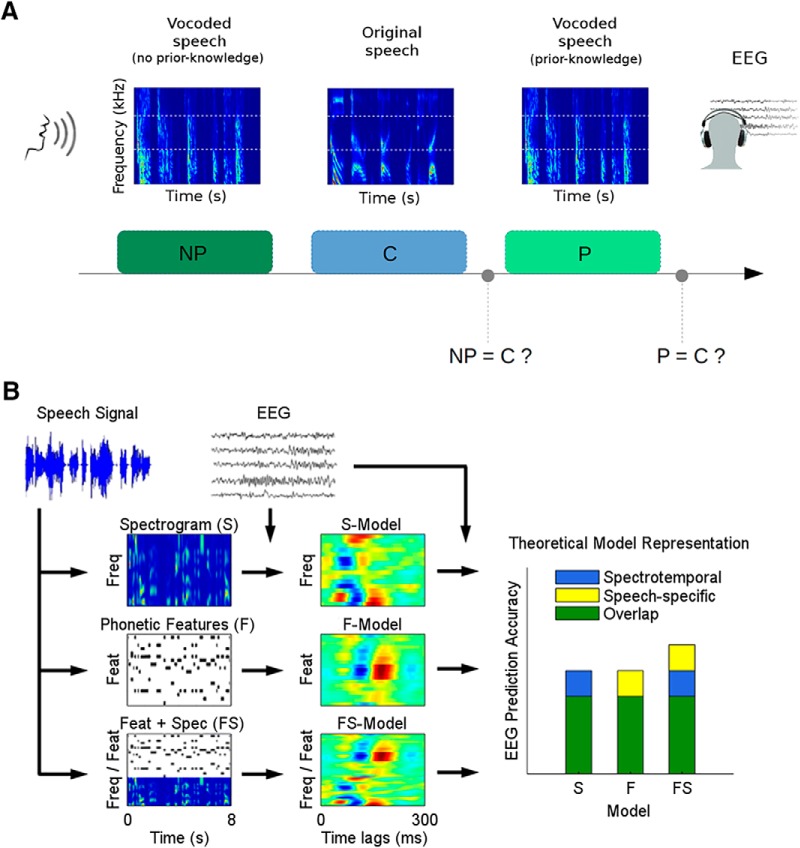Figure 1.
A pop-out experiment to modulate speech perception. A, Experimental setup. EEG data were recorded while subjects listened to groups of three 10-s long speech snippets. In standard trials, the first (NP) and the third (P: prior knowledge) speech snippets were a three-channel noise-vocoded version of the second snippet (C: clear). In deviant trials, either the first or third snippets (or both) did not fully match the second snippet. After C and P, participants were asked to identify the first and the second vocoded snippets, respectively, as matching the clean speech or not (i.e., standard or deviant trial). B, Analysis approach. A linear regression approach was used to derive mappings from different speech representations to the EEG. Regression models were fit for the acoustic spectrogram (S), a set of time-aligned phonetic features (F), and a combination of the two (FS). Each model was then tested for its ability to predict the EEG using leave-one-out cross-validation.

